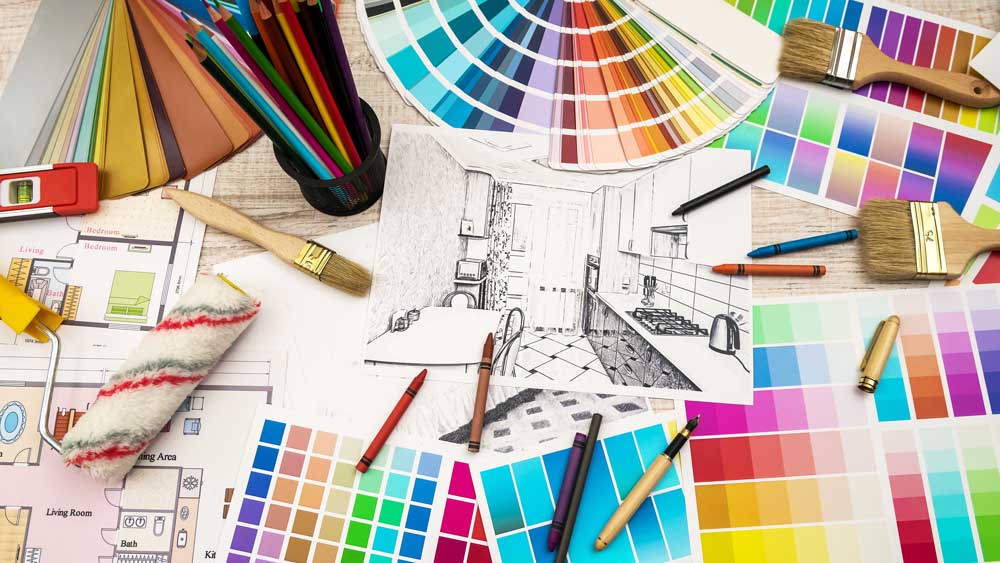A lot of things go into interior office design – from lighting to layout. One of the most important things however is colour. Why is colour so important? Well, for starters, it sets the aesthetic foundation for your office. Your office’s colour scheme can make or break your workspace in many ways. A lack of colour makes your workspace look boring and drab while too much can be visual overkill.
But colour also has the fascinating effect on influencing people’s moods, feelings, behaviours and productivity. This effect is known as colour psychology. In this article, we go over colour psychology and how each colour affects your employees in different ways.
What is Colour Psychology?
Colour psychology has been around for a long time. Ancient Egyptians studied colours and their effects and used them to achieve a myriad of benefits. These days, colour psychology is widely used, mainly in marketing and design.
It works when colour is absorbed by the retina in our eyes which sends electrical impulses to our brain. These impulses affect our behaviour, feelings and mood.
So what sort of effects do different hues have on us? Why is it important in interior office design? How can they affect the productivity of people? Let’s take a look at each colour and find out.
The Different Effects of Each Colour
Red
Red is a powerful colour, able to invoke powerful emotions. Red creates energy, excitement and passion within a workspace. It is fantastic when used as a highlight or accent in your interior office design. It boosts productivity and sparks conversation. However, the intense hues of red can be overwhelming if used excessively. Too much red can cause headaches, overambition or arguments so be sure to use it sparingly.
Blue
Blue is associated with a wide range of things – most of them positive. Intelligence, loyalty and confidence are among these. It’s no wonder then that blue is an oft used colour in office fitouts. Blue also has the added bonus of invoking calm and soothing feelings. This helps in busy workplaces and can alleviate feelings of stress.
Yellow
Yellow is the colour of happiness and sunshine. It’s mostly associated with related traits such as joy, warmth and energy. Splashes of yellow in an office can bring a dull room to life. It can also help increase productivity, creativity and collaboration. Interior designers do recommend that yellow be used sparingly. Excessive amounts can be visually unappealing.
Green
Green is easy-going on the eyes making it perfect for those who work long-hours. It also introduces a natural, fresh atmosphere to your office. It’s also associated with growth, calmness and security. These are great emotions for your employees. The best way to introduce green into your office designs is with indoor plants and leafy decor.
Brown
Brown is a classic colour which creates feelings of stability, security and support – much like the sturdy trees it takes its colour from. However, brown can look rather drab when used too much. It works best when used in combination with other colours. When paired with white or red accents, it can create a beautiful workspace for you and your employees to work in.
White
White is one of the most often used colours in office interior design. White is sleek, sophisticated and pure. It’s minimalistic and holistic appearance means that it is a great colour to use if you’re looking to make your room more spacious. However, like all things moderation is key. Too much white leaves your workspace looking uninspired, boring and lacklustre. Pair it with different coloured accents to avoid this.
Black
Sophisticated, mysterious and powerful – black is an authoritative choice for an office colour scheme. When used as a highlight with other colours, it can create an elegant, cool, modern workspace. Too much black however, and the mood turns grim and sinister. It also absorbs natural light which is an important aspect of office interior design.
Grey
Grey is an interesting colour as it sits in the middle on a spectrum of emotions. Grey can be serious and business-like which promotes productivity and a need to get work done. At the same time, greys might make an office feel like more of a prison. It is reliable and professional yet indifferent. When working with grey, the tone and shade of grey you use is incredibly important. It’s also important to pair it with other colours to truly bring an office space design to life.
Find the Right Combination for Your Office Fitout
Colours are so important. Their effect on people is understated and selecting the right combination is essential.
Selecting a colour scheme for your office space that increases creativity, collaboration and productivity can be difficult. Take into the account that you’ll need to incorporate your brand’s colours as well – it can be overwhelming.
Thankfully, our team of expert office interior designers at The One Interior can help make it easy for you. We know which colours will work best for you – while following your brand’s style guidelines! We’re the number one office designers in Sydney!
So if you’re looking for some expert advice on our next office interior design, look no further than The One Interior. Contact us now!

